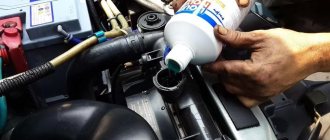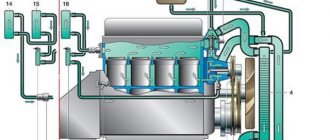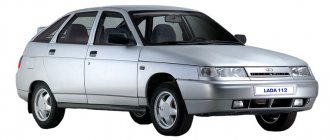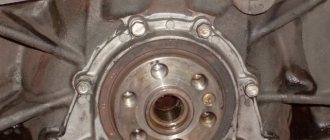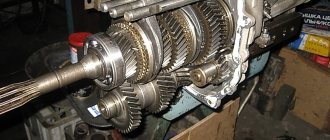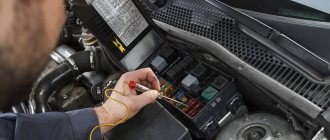Coolant is one of the components of the smooth and proper operation of engine components. Sooner or later it becomes necessary to replace the coolant in a car. Every car owner should know how to change the coolant, because there are not always funds for service stations.
Also, you should not ignore the fact that not all stations employ conscientious workers. Therefore, if you want to do it well, it is better to do it yourself. So, today we will answer the question of how to change the coolant.
There are many types of vehicle coolant. However, your choice should be taken with the utmost responsibility, since poor quality coolant can lead to engine overheating. And this will turn into global problems with the power unit.
For several decades, many car owners have used water. However, its use had several main disadvantages:
- Low boiling point, which led to engine overheating on hot summer days.
- Freezing of water at 0 °C, due to which the volume of water expands, which ultimately leads to the destruction of the block.
- Scale formation on metal parts.
Kinds
It was possible to get rid of such problems by using antifreeze (antifreeze liquid). There are several types:
- Glycol based antifreeze.
- Based on propylene glycol.
- Antifreeze.
All of these fluids perform excellent functions in maintaining engine temperature conditions.
It is worth remembering that these liquids cannot be mixed with each other. Using one of the above coolants, you can forever forget about the problems of boiling and freezing in the engine.
Why should you change?
Coolant is needed to control engine temperature. When the engine is running, fuel is burned. In this case, high temperatures are detected inside the cylinders. As a result, thermal energy heats the metal elements of the engine - pistons, cylinder head, cylinders.
Thanks to a sophisticated cooling system, the liquid collects heat and transfers it to the radiator. In addition to the main function of controlling heat and transferring it from the engine to the radiator, the coolant has additional functions. The liquid is also intended to lubricate the engine water pump. The coolant replacement period is approximately 50,000 km. Upon reaching this period, the antifreeze loses its heat transfer properties.
In addition, pollutants begin to appear in the coolant and flow throughout the cooling system. If you do not replace the coolant in a timely manner, dirt will begin to clog the engine water passages, which will subsequently lead to engine overheating and costly repairs.
How to drain antifreeze
Draining coolant from the system can be divided into several stages, each of which has its own characteristics.
Through the radiator
After preparing everything you need, follow these steps:
- Remove the motor protection by unscrewing the corresponding fasteners.
Video: draining antifreeze from the radiator
From the engine block
Since draining antifreeze from the engine block is a continuation of the procedure under consideration, we move the container under the drain hole on the engine and perform the following actions:
- We remove the elements that prevent free access to the drain plug. Depending on the car brand, these elements may vary.
- Carefully unscrew the plug.
From the expansion tank
Over time, sediment collects in the expansion tank. Therefore, when replacing the coolant, draining the substance from this container and rinsing it will not be superfluous. The essence of the procedure is to disconnect the pipe going to the radiator, followed by draining the liquid into a suitable container.
Another option is possible: the coolant can be drained through the neck using a thin tube, for example, a medical dropper.
Video: how to drain antifreeze from the expansion tank
Using jacks
The actions when using jacks largely repeat the standard procedure for draining antifreeze. After installing the container and unscrewing the plugs, the rear wheels are raised as high as possible. After 20 minutes, the car is lowered and only the left wheel is raised. After the same period of time, the car is lowered and the right wheel is raised. After such actions, a certain amount of liquid will pour out of the system each time.
A similar procedure can be used for repairs in the field by placing the machine on an incline.
Using a compressor
An air compressor can also be used when draining antifreeze. It is connected to the cooling system and air is supplied, gradually removing coolant. Although this option can be considered, but only as a last resort, since depending on the power of the device, too high a pressure may be created in the system, which will damage the plastic elements. In addition, not every car enthusiast will have a compressor of the required performance at hand.
Video: draining antifreeze using a compressor
Antifreeze must be replaced after a certain period of operation or mileage, as well as according to characteristic signs. It is not recommended to drive with a coolant that has lost its properties, since the wear of the elements and components of the cooling system increases. After familiarizing yourself with the step-by-step procedure, almost every car enthusiast can drain the antifreeze.
Source
How to change coolant on a VAZ-2107
After the driver has selected the best refrigerant, in his opinion, the fluid needs to be replaced. Initially, it is worth driving the car onto a pit, lift or overpass, always placing wheel chocks under the wheels and setting the gear lever to the 1st speed position.
Next you need to disconnect the negative terminal from the battery. If the car has additional crankcase protection installed, it must be unscrewed, since in some cases it significantly interferes with the drainage of coolant.
How to change coolant
- A prepared container for old coolant is installed under the radiator drain valve. You need to wait until the radiator is completely drained.
- Next, you need to move the container under the left side of the engine and unscrew the fluid drain bolt from the cylinder block. For the best effect, you need to open the cap on the expansion tank.
- After all the fluid has been drained from the engine, you need to screw back all the drain plugs.
- To properly change the coolant, you should flush it. You need to fill the system with well-boiled water. In older versions of cars, it should be poured into the radiator and expansion tank. On newer car models, a radiator is installed without a cap, so filling is done only through the expansion tank.
- As soon as the water is filled, you need to start the engine and let it run for 5-10 minutes to flush the cooling system.
- Drain the water using the same method.
- Then pour in the prepared liquid. To ensure that there is no air in the system, you need to press on the pipes that go to the radiator. This method is suitable for those cars that have a radiator with a filler neck. You can also drive up a hill, open the radiator cap and give it a good gas. Then you can close the lid.
- There is another method that is suitable for cars with radiators without a cover, you just need an assistant. Having unscrewed the return hose that fits the expansion tank, gradually pour liquid into the tank. As soon as liquid flows through the return hose without interruption, it will be clear that the cooling system is completely filled. Place the hose on the reservoir and add fluid to the required level.
What you will need
Choose the color of antifreeze that is in your car
First of all, you should purchase high-quality coolant. It is better if it is made by a well-known manufacturer. The product label must indicate GOST and markings. The name of the liquid can be either “Antifreeze” or “Antifreeze”. There is no fundamental difference between them, however, “Tosol” contains additives that give the liquid anti-corrosion properties.
To drain the old antifreeze, you need to prepare the dishes. It is convenient to use cut plastic canisters with a capacity of at least six liters. In total, the system contains about seven liters of antifreeze, so you will need two of these containers. Since antifreeze is one of the harmful chemicals, you will also need tightly sealed canisters into which the used liquid is drained for further disposal.
The next stage of work is to determine the location of the drain holes. To do this, you need to open the instructions in the section describing the cooling system, where their placement is indicated. After this, the holes are easy to find and see how they close. Most often, special bolts with a seal are used for this purpose to prevent fluid from leaking.
If there is no drain hole, you will have to disconnect one of the lower pipes leading to the cooling system from the radiator.
Replacing the coolant sensor
It is worth remembering that to monitor the condition of the antifreeze, it is necessary to check the functionality of the coolant temperature sensor. Therefore, you need to know where this device is located. Some cars (for example, VAZ-2114) have two temperature sensors. One displays the temperature on the instrument panel, and the other turns the fan drive on or off.
Before you think about how to change the coolant sensor, you need to do a check. The element should be tested before replacing the coolant. When you turn on the ignition, the temperature arrow quickly rises - you need to disconnect the connector from the device, and if the arrow starts to fall, then the sensor needs to be replaced. In all cars, this coolant temperature control element is installed on the cylinder head.
How to change the coolant temperature sensor on a car? To do this you need:
- Drain the coolant from the system.
- Remove the negative terminal from the battery.
- Disconnect the connector from the sensor.
- Using a wrench, unscrew the sensor and screw in a new one.
- Next, connect the wires to the sensor.
This completes the sensor replacement procedure.
Flushing the system
It is advisable to clean the cooling system in any situation. The only reason why this procedure can be avoided is if the old antifreeze is up to date or the new fluid belongs to the same class as the old composition.
There are two ways to flush the engine. The first is the use of a special composition (instructions are on the back of the package). Second, if the cooling system is relatively clean, then you can use tap water with the addition of 15–20% new coolant.
To wash with an aqueous solution:
- Pour the water mixture into the expansion tank.
- We start the engine for 15–20 minutes.
- We turn off the engine and let it sit for a while.
- Open the taps and drain the liquid.
If the quality of the drained waste does not meet the specified requirements, then you can refill the washing solution and repeat the process.
